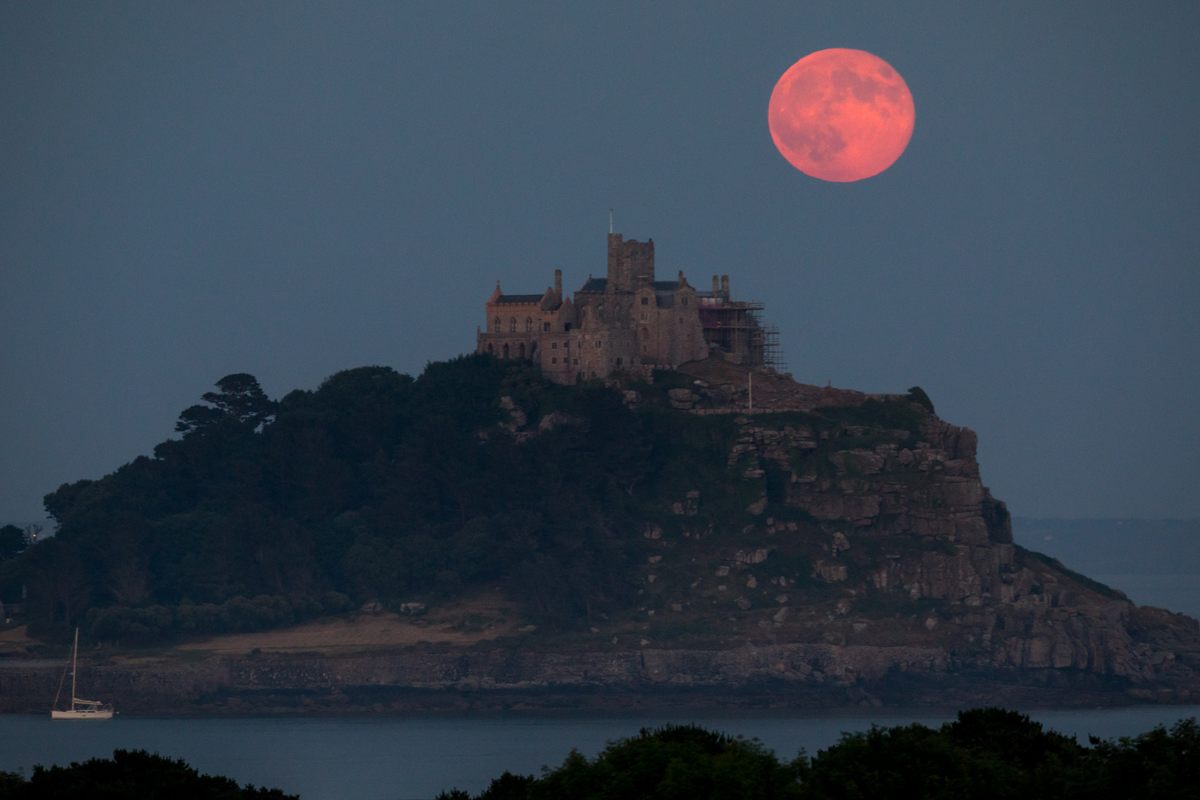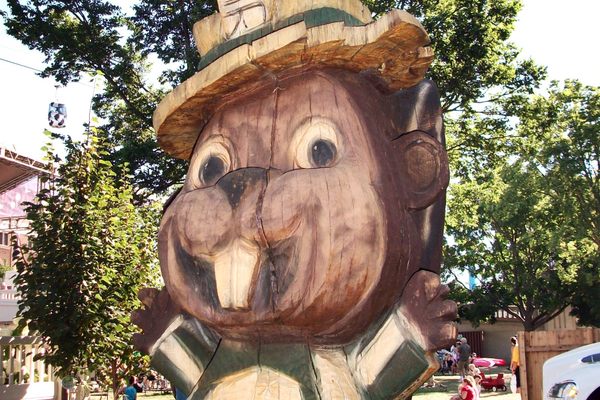The Strawberry Moon Marks a Sweet Start to Summer
Here’s why you should welcome this most lovely of full moons—and how to experience it.
Atlas Obscura’s Wondersky columnist Rebecca Boyle is an award-winning science journalist and author of the upcoming Our Moon: How Earth’s Celestial Companion Transformed the Planet, Guided Evolution, and Made Us Who We Are (January 2024, Random House). Throughout the summer, she’ll be sharing the stories and secrets of our wondrous night sky.
Late every night from spring until fall, or until the outside of my house is buried in snow, I am compelled to go outside. I can’t really explain this compulsion, but it is powerful and very real. Before I sleep, no matter where I am living, I have to walk outside and look up.
A midsummer’s night has plenty of bewitching aspects—these magical evenings are a trope for a reason—but I am not out there to seek anyone’s company. At home in Colorado now, I get to feel the fresh air, hear the shhhh of the wind in the pines, and anticipate hearing a great horned owl, but the woods are not what draws me out. My communion is with the night sky, and all it contains.
To put it more accurately, I don’t really think of the night sky as the sky, which to me connotes the azure of daytime, and is as much a part of Earth as the land and the sea. I think of the nighttime as a portal. At night, the sky vanishes and is replaced with outer space. At night, the light of our nearest star is obscured, and I can finally see the rest of the stars, along with everything else that accompanies our world on its journey through the universe. Among these companions, I am most partial to the full moon.
The Strawberry Moon has been my favorite Moon for as long as I can remember. It’s when our celestial neighbor is most striking, and at its summer best. To celebrate it, all you have to do is look outside for the next few nights.
At sunset on Saturday, June 3, the bright, round moon will rise above the eastern horizon. It will crest to its highest point, and its peak brightness, a few minutes before midnight Eastern Time in the U.S. That means from almost anywhere in North America, you will be able to see the moon at its fullest without staying up all night.
The atmosphere, that reminder that we are on Earth, often plays tricks on the moon during this time of the year. Humid air has crept northward across much of North America by June, and the extra water molecules can make the moon look hazy or even pinkish, especially around sunset. The Strawberry Moon is not necessarily pink, though; its nickname originated with the Native American tribes that marked the time when strawberries and other fruits ripen. In Europe, this Moon is sometimes called the “Honey Moon” or “Mead Moon.” All these names fit; it is a sweet Moon, a soft Moon, a slightly misty, warm, and welcoming Moon.

I love this Moon because it is so insistent that it be noticed. It rides low in the southern sky, so that it is transported right through my windows. Its light has been known to wake me up. It pools on the carpet and the walls; it spills through the corners where the blinds meet the windowsills; it soaks the leaves of the trees and plants; it pearls over my outstretched hands. It floods my retinas. It is everywhere.
A full moon is by definition opposite the sun, with Earth in between (but not exactly between, except during lunar eclipses). So summer moons are opposite summer suns on their path through the sky. The summer sun is high—we’re just a couple weeks from the summer solstice in the Northern Hemisphere—so the moon hangs lower on the horizon. During the June full moon, our celestial companion traces roughly the same path as the sun does during December. (If you are north of the Arctic Circle, you will not see this full moon at all; it won’t rise above the horizon, just like the wintertime sun fails to do.)
This means the moon is low and bright on the southern horizon, in contrast to the icy, high-overhead full moons of midwinter, which actually illuminate more of the ground. The June moon is a little less powerful, so I think it is a little more approachable.
I invite you to welcome this Moon into your mind for an unofficial start to summer. Try two things: First, leave a window unblocked, if you can, especially if you have one that faces east or south. You might be surprised at how bright it gets inside. And second, do as I do, and just walk outside for a few moments. Step onto your porch, your deck, your stoop, your driveway, your dock, whatever threshold you have, and greet the night and its gleaming moon.
Next week, you should bring a blanket, too, and maybe a few other supplies that will make it more comfortable to sit there a while. But for now, to experience the glorious Strawberry Moon, all you need to do is go out, open your eyes, and look up.












Follow us on Twitter to get the latest on the world's hidden wonders.
Like us on Facebook to get the latest on the world's hidden wonders.
Follow us on Twitter Like us on Facebook